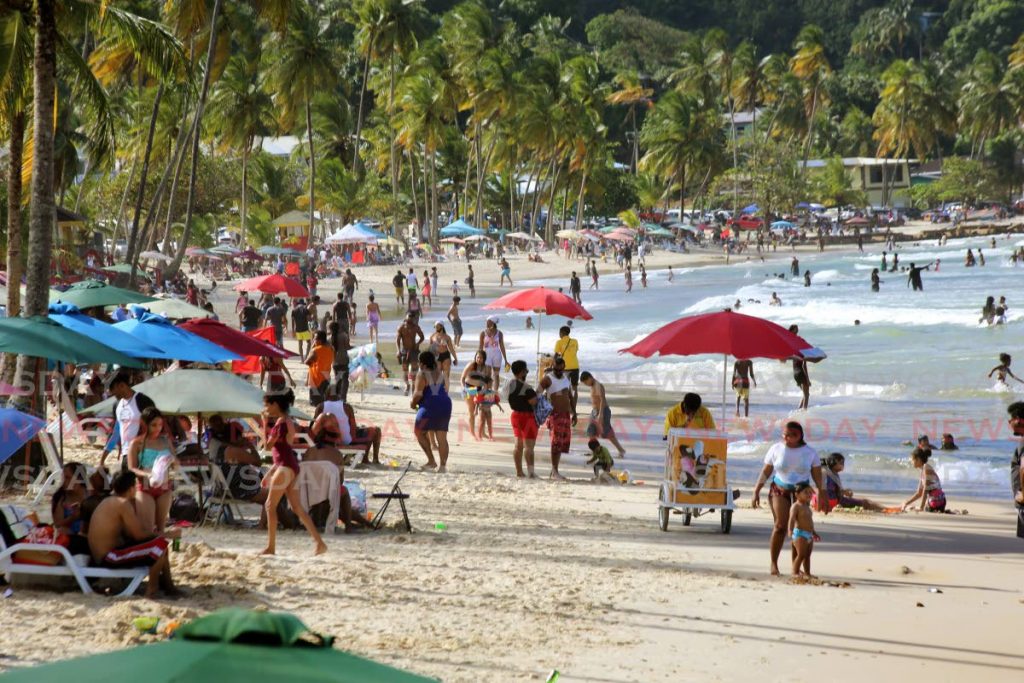Expert: Shark attacks in TT waters rare

Two recent shark attacks in Caribbean, one of them fatal for a UK tourist, have sparked some fear and concern among those who swim in the ocean.
But Dr Farahnaz Solomon, a fisheries biologist at the Institute of Marine Affairs, does not think there is a greater chance of someone being bitten in TT waters.
“In general, there is always the possibility of a shark attack once sharks are present. However, that probability is incredibly low. The likelihood of being attacked and killed by a shark are 1 in 3.75 million – less than the chances of dying by lightning strike or excessive cold.”
On December 10, a 38-year-old British tourist was bitten in Orient Bay, St Martin as she swam about 150 metres from shore. She died from her injuries. And on January 9, a 26-year-old college student from Texas was attacked by a tiger shark near Booby Island, off St Kitts. She managed to fight off the shark and was rescued by kayakers. Her left leg was amputated just above the knee.
In response to questions, Solomon said while there are 85 species of sharks in the wider Caribbean region, there has actually been a decline in the number, a sign of a growing need to conserve this apex predator.
Closer to home, there are about 40 different species including the hammerhead, tiger and bull sharks.
“Shark species in our local waters inhabit a variety of habitats ranging from inshore coastal waters to the deep ocean. Locally, sharks are caught using a variety of gears along all coasts. It is thus difficult to say which areas are prone to have sharks as opposed to others.
“What may be useful information in terms of avoiding a shark attack is that many species of sharks are known to come closer to shore during dusk, dawn and night-time hours, which are their feeding times. Staying out of the water during these high-risk times would reduce the chances of an attack,” Solomon advised.
The IMA, she said, had not received any reports of any new shark species in local exploration of the deep sea and greater documentation of our marine biodiversity.
Asked whether factors such as climate change or warmer waters were a factor for a possible migration of sharks to the Caribbean, she said it was difficult to predict the impact of those factors. For example, while warmer waters may result in a range expansion for some species, warmer waters may also result in shark aggregations in particular area.
“It is very unfortunate that sharks have gotten a bad name because of movies like Jaws and Deep Blue Sea, which have contributed to our fear and misunderstanding of these enigmatic creatures.
“Shark attacks, which are very rare, are also highlighted by the media, contributing to this fear. The media needs to play a greater role in highlighting the importance of shark as apex predators in our marine environment and the need for management and conservation,” Solomon said.
She opined that the increase in reported shark attacks in recent decades have been attributed to a number of factors – mainly the increased use of the marine environment by humans – more people are entering the water for swimming, diving and surfing.
“Humans are also spending longer hours in the water. Because both sharks and humans prefer this nearshore zone, this increases the probability of an encounter with a shark.
“Another factor is the changes in the distribution and abundance of shark prey, in that sharks may be following their prey closer in shore. While this has been documented for some areas in Australia, it has not been documented locally.”
Another possible factor in increased shark attacks,she said, was the destruction of their usual nearshore habitats, “causing them to move into other areas, which may increase their encounter with humans.”
Solomon said the majority of unprovoked attacks recorded were bythe great white, tiger and bull shark species. While the latter two have been sighted by divers in Tobago, they have co-existed with swimmers, divers, snorkellers, fishers and surfers.
Swimming tips to avoid attacks:
1. Always swim in a group. Sharks most often attack lone individuals.
2. Don’t wander too far from shore. Doing so isolates you and takes you away from assistance.
3. Avoid the water at night, dawn, or dusk. Many sharks are most active at these times and are better able to find you than you are to see them.
4. Don’t enter the water if you’re bleeding. Sharks can smell and taste blood, and trace it back to its source.
5. Don’t wear shiny jewellery. The reflected light looks like shining fish scales.
6. Don’t go into water containing sewage. Sewage attracts bait fish, which in turn attract sharks.
7. Avoid waters being fished and those with lots of bait fish. Diving seabirds are good indicators of such activities.
8. Don’t enter the water if sharks are present. Leave immediately if you see them.
9. Avoid an uneven tan and brightly coloured clothing. Sharks see contrast particularly well, so use extra caution when waters are cloudy.
10. Don’t splash a lot. Also, keep pets out of the water. Erratic movements can attract sharks.
11. Use care near sandbars or steep drop-offs. These are favourite hangouts for sharks.
12. Don’t relax just because porpoises are nearby. Sightings of porpoises do not indicate the absence of sharks. Both often eat the same foods.
13. Don’t try to touch a shark if you see one.
14. If attacked by a shark, the general rule is “Do whatever it takes to get away!” Some people have successfully chosen to be aggressive, others passive. Some yelled underwater, others blew bubbles.
–Source: Florida Museum

Comments
"Expert: Shark attacks in TT waters rare"